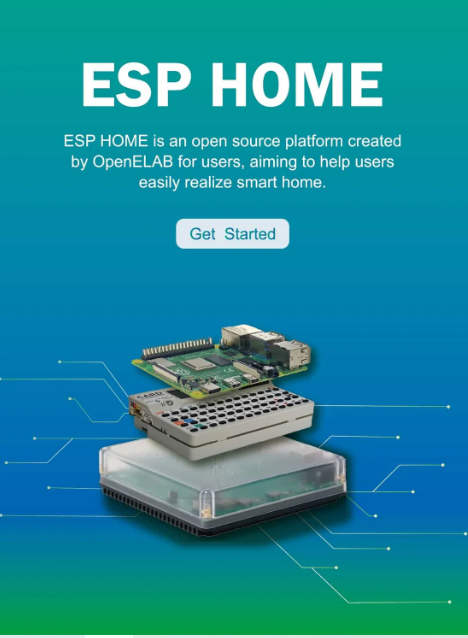You might wonder how Openelab and Aiot are transforming your approach to IoT development. By integrating AI into their frameworks, these platforms tackle common infrastructure hurdles while providing powerful tools for real-time data analysis. Imagine having predictive maintenance and enhanced security at your fingertips—streamlining your workflow and enriching user experiences. As innovative features emerge, the landscape of IoT applications is changing rapidly. What implications does this integration hold for the future of your projects? M5Stack.
Overview of Openelab and Aiot
Exploring the world of IoT development, you’ll find that Openelab and Aiot play pivotal roles in driving innovation. These platforms integrate cutting-edge technologies to enhance how you build and deploy IoT solutions.
Openelab serves as a collaborative framework, providing tools that empower developers to create, test, and implement various IoT applications efficiently. It streamlines the development process, enabling you to focus on creativity rather than grappling with complex infrastructure problems.
On the other hand, Aiot emphasizes the intelligence that AI brings to IoT. By harnessing machine learning and data analytics, Aiot allows you to analyze vast amounts of data generated by interconnected devices. This capability opens up a world of insights, enabling you to make informed decisions and optimize performance in real-time.
Both Openelab and Aiot work synergistically, creating a robust ecosystem that fosters innovation and accelerates the development cycle. As you engage with these platforms, you’ll discover how they can transform your approach to IoT projects, enabling you to leverage technology in ways that were previously unimaginable.
In an ever-evolving landscape, embracing these tools is essential to staying ahead of the competition.
Key Features of Openelab
Openelab boasts several key features that make it an invaluable platform for IoT development. First off, its user-friendly interface allows you to easily navigate through complex systems without extensive coding knowledge.
You’ll appreciate the drag-and-drop functionality, enabling quick prototyping and deployment of IoT solutions.
Another standout feature is its robust integration capabilities. Openelab supports various protocols and APIs, letting you seamlessly connect with diverse devices and services. This flexibility means you can tailor your IoT applications to fit unique requirements.
Moreover, Openelab comes equipped with powerful analytics tools. You can gather, analyze, and visualize data in real-time, making decision-making much more straightforward. This feature not only enhances usability but also empowers you to derive insights from your data efficiently.
The platform also offers strong security measures, ensuring that your IoT solutions remain safe from potential cyber threats. It includes built-in encryption and authentication protocols, so you can focus on innovation without worrying about vulnerabilities.
Lastly, Openelab provides excellent documentation and community support, giving you the resources you need to troubleshoot and enhance your IoT projects.
With these features, Openelab positions itself as a leading choice for IoT development.
Advantages of Using Aiot
The advantages of using AIoT (Artificial Intelligence of Things) are substantial, driving significant improvements in efficiency and productivity. By integrating AI with IoT devices, you can harness real-time data analysis, enabling faster decision-making and optimal resource allocation. This means you can quickly identify issues and make adjustments without delay.
AIoT also enhances automation. With smart devices working together intelligently, you don’t have to manage systems manually. Instead, you can focus on strategic initiatives that improve your business’s bottom line. Moreover, predictive maintenance becomes achievable; sensing devices can foresee equipment failures, reducing downtime and saving costs.
Another key advantage is improved data security. AI can analyze traffic and detect anomalies in real-time, allowing you to respond to potential threats before they escalate.
Additionally, AIoT fosters more personalized user experiences, gathering user data to provide tailor-made solutions, boosting customer satisfaction.
Lastly, leveraging AIoT facilitates scalability. As your needs grow, you can easily integrate new devices and technologies into your existing system without significant infrastructure changes. This means you’ll stay ahead, ready to adapt to evolving market demands.
Integration of AI in IoT Development
Integrating AI within IoT development brings a new level of sophistication to smart technologies. You’ll find that AI enhances IoT devices by enabling them to process massive amounts of data in real-time. This means you can make more informed decisions and predictions based on accurate insights.
For instance, smart home devices can learn your habits, optimizing energy consumption and improving your overall comfort.
Additionally, deploying machine learning algorithms can help identify patterns and trends within your data. With this ability, IoT systems can adapt automatically, reducing the need for manual adjustments.
Imagine your wearables tracking your health metrics and alerting you to potential issues before they escalate.
Moreover, AI-powered IoT devices can enhance security measures. You can implement intelligent surveillance systems that learn from past incidents, spotting anomalies and triggering alerts when necessary.
This proactive strategy significantly boosts your safety.
Future Trends in IoT and AI
Significant advancements in the realms of IoT and AI are on the horizon, promising to reshape how we interact with technology.
You’ll witness a surge in smart devices that not only gather data but also analyze it in real-time to make proactive decisions. This capability will empower you to automate daily tasks, enhancing convenience and efficiency in your life.
Edge computing will play a vital role, enabling devices to process data locally instead of relying on distant servers. This means quicker responses and reduced latency, which is crucial for applications like autonomous vehicles or smart healthcare.
You can also expect AI-driven predictive maintenance, where devices anticipate issues before they arise, minimizing downtime and costs.
As privacy and security concerns continue to rise, you’ll notice more robust cybersecurity measures being integrated into IoT devices. These proactive strategies will help safeguard your data while enhancing trust in connected ecosystems.
Lastly, the convergence of AI with blockchain technology could redefine IoT security, facilitating secure transactions between devices.
Embracing these trends will significantly elevate your experience, making technology not just smarter but also more intuitive and user-friendly.
Conclusion
In conclusion, Openelab and Aiot are transforming the way you approach IoT development by integrating powerful AI capabilities. With features like predictive maintenance and enhanced security, you can optimize performance and make informed decisions quickly. Embracing these innovative tools not only speeds up your prototyping and deployment processes, but also enhances the overall user experience. As you look to the future, leveraging this synergy will keep you ahead in the ever-evolving landscape of IoT and AI.






